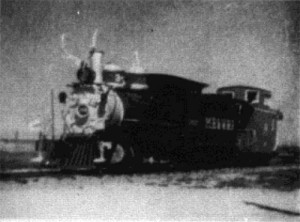
"In Narrow Gauge Kingdom Roger H. Klatt presents an ambitious and highly successful documentary study of the rapidly vanishing narrow gauge railroads of the Far West—and of Colorado in particular. Excellently photographed and edited, Narrow Gauge Kingdom gives rewarding evidence of high-caliber research carried out by a genuine railroad enthusiast. Both picture-wise and in well-delivered narrative, Mr. Klatt has delved deep into the flavor of his subject, producing a film which, despite is length, is interesting throughout and of lasting historical significance. A newcomer to the Ten Best competitions Mr. Klatt has used the medium of the motion picture with rare competence. Not only has he effectively pinned down the dramatic possibilities inherent in his subject, but he has utilized the mountain background of Colorado to fine advantage. Apparently neutral between the proponents of magnetic stripe or tape recording, Mr. Klatt has used both, skillfully putting the narration and railroading sound effects on magnetic stripe and and effectively indigenous guitar accompaniment on a separate tape!" PSA Journal, Jan. 1955, 48.
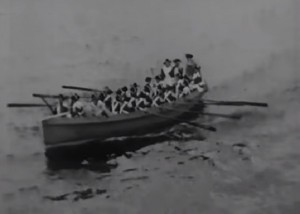
"The subject of 'Nation Builders'—the history of Australia—is without doubt the most ambitious ever undertaken by any amateur filmer. The fact that the project was successful is in itself a tribute to Sherlock's skill. Granted that in connection with the 150th anniversary of his nation's founding there were pageants re-enacting historic events and an opportunity for an alter filmster to photograph them: but how many times have not other amateurs scored dismal failures trying the same thing? Filming such a pageant, it is all too easy to capture only the impression of history actually happening. The twentieth century background which must so often have been just beyond the camera-lines was never permitted to intrude upon his eighteenth and nineteenth century action." American Cinematographer, Feb. 1939, 61.
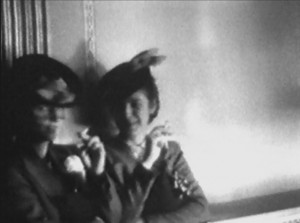
"Record of a film society screening at the Stanley Theatre on Granville Street, Vancouver. Includes shots of the "concert" program; scenes outside the theatre before and after the show and at intermission; audience in the lobby; movie scenes shot off the screen from the auditorium; unidentified man introducing films. Oscar Burritt and other film society members are glimpsed briefly. " (BC Archives)
"Wayne Mitchell, a former Ranger in the National Park Service acquaints the audience with a few of the Ranger's many jobs. Filmed in the Sequoia National Park, with Mrs. Mitchell as co-producer, this excellent film includes a hair-raising fire sequence which was finally obtained only after the Mitchells had expended considerable time and energy chasing forest fire reports from San Diego to Sequoia. Invariably upon arrival, they would find it to be only a brush fire or in a spot inaccessible for filming. The film demonstrates their eventual successes." PSA Journal, Dec. 1955, 36.
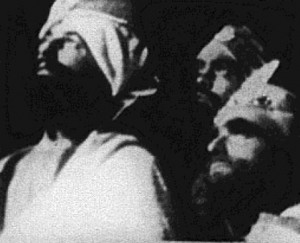
"Everybody has religion of some kind, of some creed. But to try to portray it in motion pictures takes courage in any language your faith. In The Nativity, Sal Pizzo has picture the story of the birth of Christ with unerring good taste, complete reverence and warm beauty. In it he follows old Biblical paintings as a pattern, but he animates these tableaux in a natural manner. One might wish, in fact, that he had followed them even further and used lighting to suggest halos around Mother and Babe. The long-shot model of the town of Bethlehem is believable. The bearded faces of the innkeepers are believable and, a great achievement, the costumes of the opulent kings are believable. The acting is handled with admirable restraint, the story being carried by the words of familiar Christian carols of background music. Especially well-staged are the scenes of the shepherds around their fires and of the Magi as they present their gifts to the Child in the humble manger. Mr. Pizzo and his associates have planned and executed a picture on a subject that few if any would dare to attempt. They are to be congratulated on their tender and moving triumph" PSA Journal, Jan. 1955, 50.
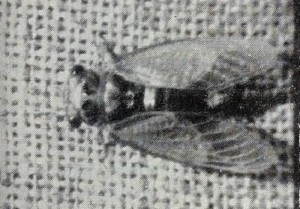
"There is a lively and rewarding sense of participation about Nature Campers which, despite its threatening length, should give this picture wide appeal. In it, an eager-eyed group of young people and a few engagingly raffish naturalists pursue their studies of the outdoors with enthusiasm — and sound cinematics. Birds, butterflies, frogs and fish are among the creatures which come before Herbert Shumway's camera. But they come there, not just in the stiff ultracloseups of the studio, but as a natural part of the picture's development. The background musical selections are an enjoyable addition to an entertaining picture." Movie Makers, Dec. 1951, 412.
"‘I practiced the additive two-colour process introduced some two years ago, and applied to the small 9.5mm film. In front of the camera lens a revolving plate containing a red and green screen is mounted in such a way that one picture is taken through the red and the following through the green screen, and so on. By cameras like the “Nizo” an interchangeable plate is mounted in front of the stop permitting one to take with the same camera both ordinary and coloured pictures. The speed for taking and projecting the film should not be less than twenty-four pictures to the second, in order to assure a correct melting of the colours of the screen. The film must be panchromatic and the colour of the screens in accordance with the film used. In the beginning when there were no panchromatic films on the market I practised the copying method. However, since the introduction of the first class reversible panchromatic films I practice the reversing method.
As regards exposure I am of the opinion that good results may be obtained in all sorts of weather. I never use a stop less than f.2. My lens is a Meyer Plasmat 1.5. The Adriatic sea films I sent you were taken with stops 8 and 11. Of course great care must be taken in developing the film to obtain satisfactory results.
Projecting may be done by two methods: First, the projector may be fitted with a revolving plate containing screens as mentioned above, but of somewhat lighter colours. The method is simple, but has two drawbacks: (a) that the projector must be adjusted with a suitable screen, and (b) that the green screen cannot be regulated. Second, the film is coloured with suitable red and green colours. When making a film in which the blue colour prevails I use a blue-green colour (see my Adriatic sea film), others, as my film Botanic Garden with a yellow-green colour. It is true that this second method requires great patience. However, the results are far more satisfactory and a film coloured by this second method can be projected on any 9.5mm. projector, together with an ordinary film at the same time'" (IAC Bulletin, Jan. 1934, 14-15).
"In this year's goodly collection of films based largely on extension tube cinematography, Nature in the Garden by W. G. Nicholls tops not only the excellent pictures of many other contestants, but also his own Ladybird, a ten best award winner in 1953. Nature in the Garden is an instructional film pure and simple, chock full of facts to please the most apathetic, as well as the most enthusiastic, bug-viewer. Excellent technical work by a master student of both nature and cinematography has resulted in outstanding and often exciting closeups of bees, spiders, moths and other insects. Skillful editing and an unobtrusive yet informative narrative make Mr. Nicholls' production an exceptional short subject. To this teacher, Nature in the Garden is definitely superior to most of the professional nature films now being circulated in American educational circles" PSA Journal, Jan. 1955, 49.
"Nature Of Life: From far away Trieste, Giuseppe Della Noce sent this 550 foot black and white sound film, which represents tremedous effort, both in the photography and in the sound recording. Displaying the sensitive poetic talents of its maker, Nature Of Life is by way of revelation of life itself. The opening shots, conceived with great imagination, suggest the beggining of time, the settling of the earth and its eventual population. The mating instinct is portrayed in a childhood friendship that ripens into love and finally marriage, and the picture goes on from there to show the progression of life symbolized finally by an old couple slowly plodding up a mountain path, while two frisky youngsters pass them coming down the mountain. Unfortunately choice of narrator for the comentary was not the best and the narration, on which much of the picture's continuity and effectiveness depends, falls far short of its goal." American Cinematographer, May. 1951, 192.
Total Pages: 295